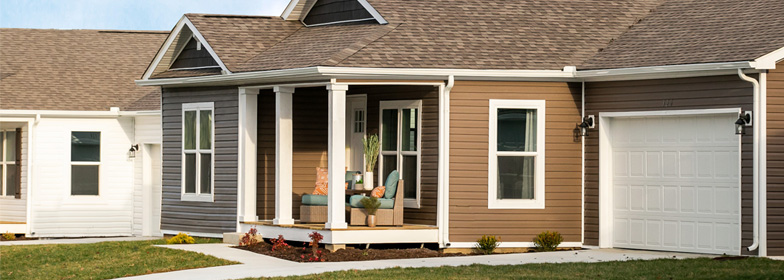
What’s the difference between a manufactured, modular and mobile home?
What comes to mind when you picture a new home being built? Do you envision a wooden frame on a foundation at a construction site? This building model, known as stick-built framing, has been around for decades and site-built homes such as these account for the majority of new-home construction.
Despite its widespread use, stick-built framing isn’t the only way to construct a quality home. Many homes are built in a factory, transported to the site and assembled. Whether it’s a manufactured, modular or mobile home, these structures are known as manufactured housing or factory-built housing. National Mortgage News reports that manufactured housing is growing in popularity, accounting for almost 10% of new residential construction projects.
Manufactured housing can offer significant savings over conventional site-built homes without compromising quality, empowering more Americans to become homeowners. Learn what makes a home manufactured vs. modular vs. mobile, as well as manufactured home mortgage financing options.
What’s a manufactured home?
“These are homes built entirely in the factory, transported to the site, and installed under a federal building code administered by the U.S. Department of Housing and Urban Development (HUD),” states the Manufactured Housing Institute (MHI). “Since 1976, the federal standards regulate manufactured housing design and construction, strength and durability, transportability, fire resistance, energy efficiency and quality.”
Manufactured homes create more affordable housing options. According to the MHI, a significant advantage of a manufactured home vs. a house is that the average price per square foot for a manufactured home is less than half of what it is for a conventional site-built home.
What’s a modular home?
Also called “prefab homes,” the sections of modular homes are built off-site in a factory. Home modules are then transported to the housing site where they’re assembled and installed into premade foundations. Unlike manufactured homes, modular homes aren’t regulated by federal standards. Instead, they’re built to the state or regional building codes where the home is located. Modular home advantages may include lower construction costs and energy-efficient construction.
What’s a mobile home?
The term mobile home or trailer home only applies to manufactured homes made before 1976 when the HUD Code went into effect. Mobile homes were “designed and sold as lightweight, self-contained living units that could readily be moved from one site to another over the highways,” explains HUD.
A new class of manufactured homes
The MHI recently introduced a new class of manufactured homes that exemplify the quality and innovation found in off-site built housing. CrossMod™ represents the blending, or crossover, of features built on-site and the innovative, efficient modern methods used in factory home construction.
David Battany, executive vice president of capital markets at Guild, explains, “These manufactured homes use materials similar to those of site-built homes, but are manufactured in the builder’s warehouse. Because they’re constructed in a controlled environment, these homes can be made much more efficiently, which lowers the cost of construction and helps improve affordability for new homebuyers. Aesthetically, the homes can be built in a variety of floor plans, including open concepts, with the same square footage as traditional homes. We believe a number of customers will find this flexibility in both the design of the home and the financing quite attractive.”
Our mortgage program for manufactured homes
Offered in conjunction with Fannie Mae, the Guild Mortgage MH Advantage® program creates more affordable and innovative home options for families interested in owning a manufactured home. This program provides homebuyers with a high-quality, flexible mortgage option that can deliver significant cost savings when compared with financing for traditional manufactured homes. Manufactured homes that qualify for the program can include custom amenities, such as attached garages, upgraded kitchens and bathrooms, energy-efficient appliances and architectural features. Eligible homes are identified by a “Mortgage Financing Notice,” also known as the “MH Advantage Sticker.”
MH Advantage gives homebuyers a high-quality option with a low down payment and a lower interest rate. Conventional, FHA, VA and USDA financing options are also available. Connect with a knowledgeable residential loan officer in your community to learn more.
The above information is for educational purposes only. All information, loan programs and interest rates are subject to change without notice. All loans subject to underwriter approval. Terms and conditions apply.
